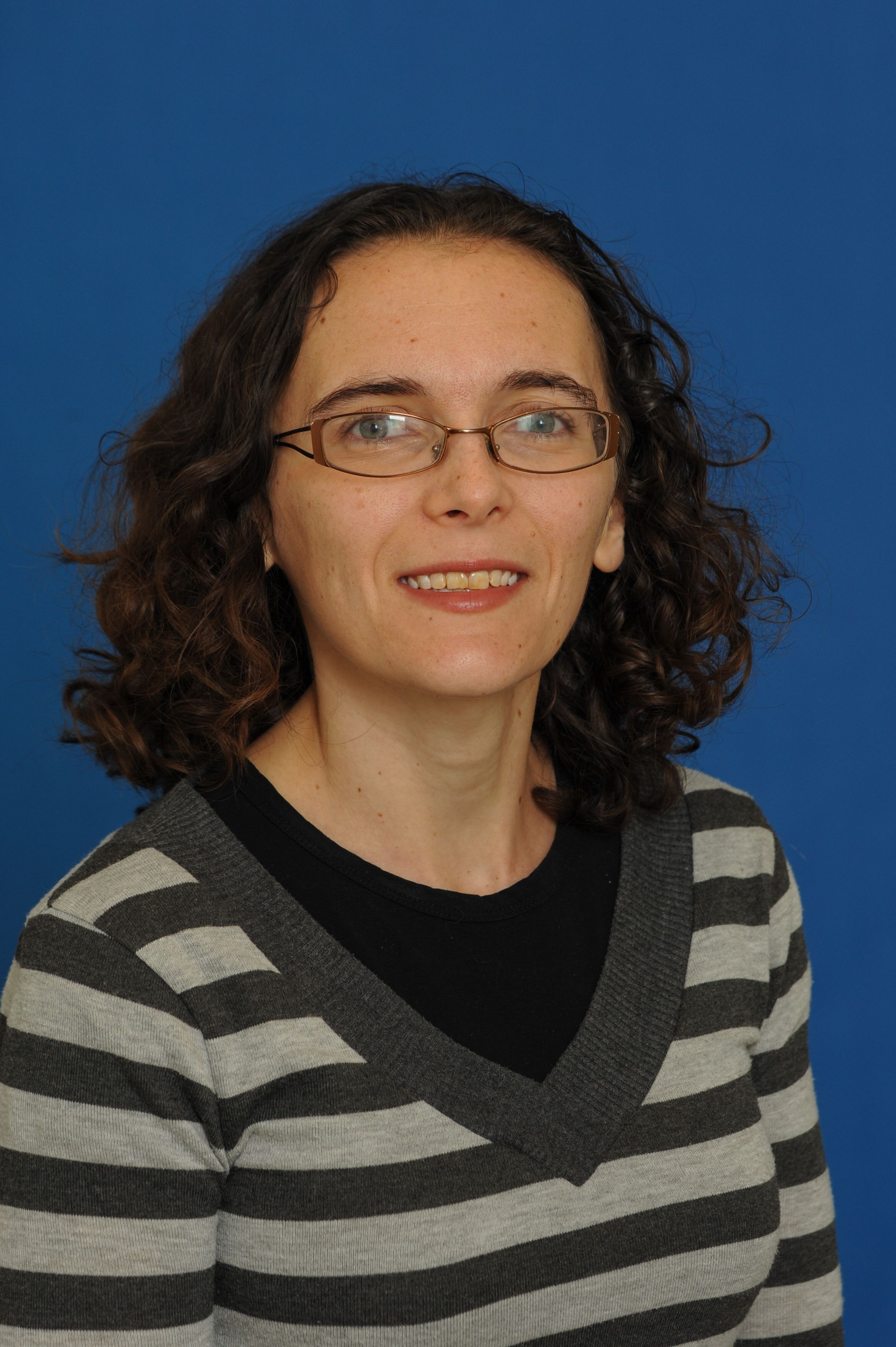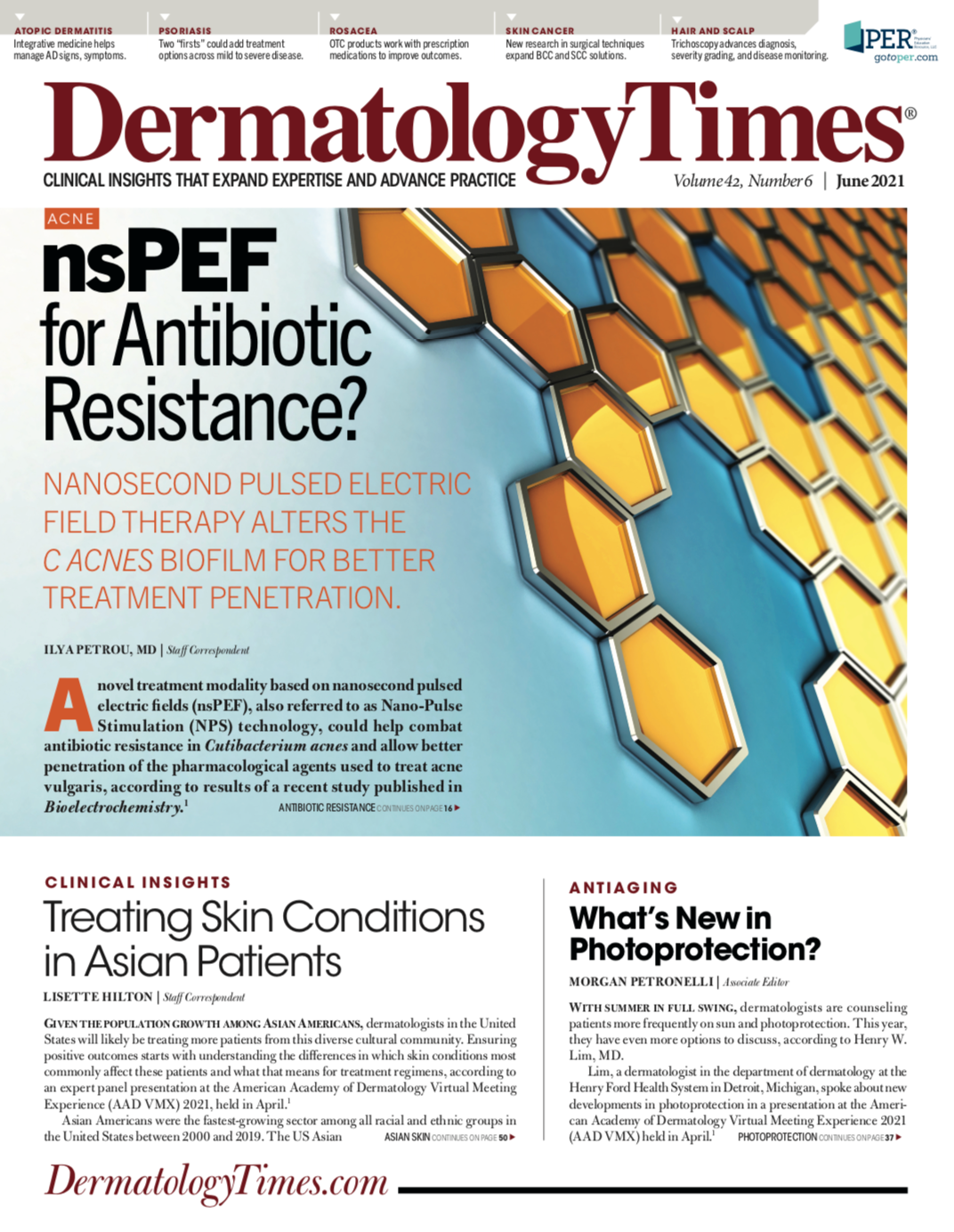- Acne
- Actinic Keratosis
- Aesthetics
- Alopecia
- Atopic Dermatitis
- Buy-and-Bill
- COVID-19
- Case-Based Roundtable
- Chronic Hand Eczema
- Drug Watch
- Eczema
- General Dermatology
- Hidradenitis Suppurativa
- Melasma
- NP and PA
- Pediatric Dermatology
- Pigmentary Disorders
- Practice Management
- Precision Medicine and Biologics
- Prurigo Nodularis
- Psoriasis
- Psoriatic Arthritis
- Rare Disease
- Rosacea
- Skin Cancer
- Vitiligo
- Wound Care
Publication
Article
Dermatology Times
Nanosecond Pulsed Electric Field Therapy for Antibiotic Resistance?
Author(s):
Study results reveal that nanosecond pulsed electric field therapy alters the C. acnes biofilm to enable better treatment penetration.
A novel treatment modality based on nanosecond pulsed electric fields (nsPEF), also referred to as Nano-Pulse Stimulation (NPS) technology, could help combat antibiotic resistance in Cutibacterium acnes and allow better penetration of the pharmacological agents used to treat acne vulgaris, according to results of a recent study published in Bioelectrochemistry.1
This energy modality applies ultrafast, non-thermal energy pulses, with pulse durations from billionths up to a millionth of a second. nsPEF energy pulses enter cells and are believed to alter the function of internal cellular organelles, including the mitochondria and endoplasmic reticulum, without disrupting the integrity of the outer cell membrane or extracellular tissue, like the dermal tissue.
This unique mechanism of action initiates a cascade of events within the affected cells, leading to regulated cell death (RCD). Histologic analysis demonstrates that NPS technology non-thermally stimulates a natural cell death that results in a less traumatic inflammatory response3 than thermal technologies like extreme heat or extreme cold.
C acnes is an anaerobic bacteria that normally occupies the hair follicles and sebaceous glands. nsPEF has been shown to be highly effective and well tolerated in slowly eliminating targeted sebaceous glands.4
However, failure to kill 100% of the targeted bacteria may position the potential near-term use of this technique as an adjunctive therapy more than as a stand-alone one, concluded the study investigators.
The increasing prevalence of antimicrobial resistance has emerged as a major concern in dermatology and the medical community at large. Physicians and researchers point to a number of reasons for this development, including different antibiotic prescribing habits, concomitant use of topical agents (eg, retinoids, and benzoyl peroxide), varying methods of bacterial sampling, and different C acnes populations.
The investigators also explored an additional challenge: the ability of C acnes to adhere to surfaces, including human skin, in structured microbial communities known as biofilms. The cells in biofilms are more resilient to antimicrobial stresses than are free-living or planktonic cells.
As a result, acne therapeutic options such as topical or systemic antimicrobial treatments often show incomplete responses, according to the investigators. In fact, they pointed to study results indicating that 94% of acne patients have C acnes strains on their skin that are resistant to at least 1 antibiotic.2
Current antimicrobial resistance reduction strategies include avoidance of antibiotic monotherapy, combination treatment with topical modalities, and limiting the duration of oral antibiotic use.
Destroying the biofilm is an interesting treatment approach and could represent a potential paradigm shift in acne treatment and management, study coauthor Erin B. Purcell, PhD, told Dermatology Times®. Purcell is an assistant professor in the Department of Chemistry & Biochemistry at Old Dominion University in Norfolk, Virginia.
Erin B. Purcell, PhD

“Any treatment modality that could either, [1], sensitize cells and make them more vulnerable to existing antibiotics, or [2, subject them to] a physical killing method to which [they] can’t develop genetic resistance, is really exciting,” she said. “[nsPEF] is a different kind of therapeutic tool and helps us expand our treatment options beyond the antibiotics that we are practically running out of. An exciting aspect of this treatment modality is that it is a physical killing method that does not rely on antibiotics. As such, it cannot contribute to the growing problem of antibiotic resistance seen today.”
In the study, researchers employed an investigatory prototype system (Pulse Biosciences) that utilizes the application of nsPEF, a new promising cell stimulation technology, to inactivate C acnes. They cultured a series of C acnes bacteria in a standard fashion, then treated them with the nsPEF device using a parameter range that included 250 to 2000 pulses, 280 nanosecond pulses, 28 kV/cm, 5 Hz; 0.5 to 4 kJ/ml.
Compared with conventional pulsed electric field technologies used to inactivate microorganisms, nsPEF utilizes much shorter pulses to cause a structural disorganization of the cell wall and partial destruction of the spore coat architecture, impacting bacterial cell viability, says Claudia Muratori, PhD, the corresponding author.
Claudia Muratori, PhD

Results showed that all tested nsPEF doses failed to inactivate planktonic C acnes. However, pretreatment with lysozyme (LY)—a naturally occurring cell-wall–weakening enzyme found in body secretions such as tears, saliva, and milk—increased C acnes’ vulnerability to nsPEF treatment.
“Our results reveal for the first time the synergistic effect between LY and nsPEF at killing Gram-positive bacteria,” wrote investigators.
The researchers found that when C acnes was growing in a biofilm, it appeared to become more sensitized to nsPEF-induced stress. The bacteria’s biofilm-derived cells demonstrated increased cell death after nsPEF treatments; the treatments did not affect planktonic cells. The biofilm inactivation by nsPEF was confirmed by treating intact biofilms grown on glass coverslips with an indium oxide conductive layer.
When bacteria contacts surfaces and forms biofilms, they are protected from sources of stress, including antibiotics, according to Purcell. Typically, the dose of antibiotics or other stress-causing agent that is needed to kill bacteria is higher if the bacteria are in biofilms than if they are in a free-moving individual form, she added.
“Making the biofilm more vulnerable is very exciting. It’s kind of a break from the status quo regarding approach to therapy,” Purcell said. “nsPEF potentially could be used to presensitize the cells in biofilms to other stresses like antibiotics. In my opinion, the use of nsPEF technology could be a transformative treatment approach for acne patients.”
Many current treatments for acne vulgaris are aimed at the commensal bacteria, trying to kill off those that are harmful while protecting and nurturing those that contribute to the maintenance of good skin health. nsPEF is more targeted. By ablating only C. acnes, it allows for the repopulation of good commensal bacteria around the treatment area to reestablish it as healthy skin.
“This modality [could] achieve that repopulation, especially because it is not a systemic treatment and not applied to a specific spot,” Muratori said.
Study results showed that nsPEF, more efficiently than antimicrobial agents, kills bacteria in biofilms; however, it did not kill all targeted biofilms in culture. For that reason, Purcell said this approach is not yet suitable as a stand-alone treatment for acne vulgaris. However, she believes that the modality could potentially be very beneficial when used in combination with standard acne-treatment regimens.
Purcell reiterated that researchers will continue to explore alternative treatment approaches for acne vulgaris—such as nsPEF technology and combination therapies that reduce or eliminate reliance on antibiotics—to try to avoid contributing to the growing problem of antimicrobial resistance.
“Antimicrobial stewardship and keeping its resources available have to be a shared goal in the medical community,” she said. “Very soon, novel nsPEF technology could supplement what we already have for the treatment of acne vulgaris and be a tool that clinicians have in their armamentarium.”
Disclosures:
Pulse Biosciences funded the study.
The authors reported no relevant or financial disclosures.
References:
1. Poudel A, Oludiran A, Sözer EB, Casciola M, Purcell EB, Muratori C. Growth in a biofilm sensitizes Cutibacterium acnes to nanosecond pulsed electric fields. Bioelectrochemistry. Published online March 9, 2021. doi:10.1016/j.bioelechem.2021.107797.
2. Ross JI, Snelling AM, Carnegie E, et al. Antibiotic-resistant acne: lessons from Europe. Br J Dermatol. 2003;148(3):467-478. doi:10.1046/j.1365-2133.2003.05067.x
3. Kaufman D, et al. A Dose-Response Study of a Novel Method of Selective Tissue Modification of Cellular Structures in the Skin With Nanosecond Pulsed Electric Fields. Lasers in Surgery and Medicine 2019; 52: 315-322.
4. Munavalli G, Zelickson B, Selim M, Kilmer S, Rohrer T, Newman J, et al. Safety and Efficacy of Nanosecond Pulsed Electric Field Treatment of Sebaceous Gland Hyperplasia. Dermatologic Surgery 2020; 46: 803–809



























